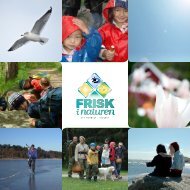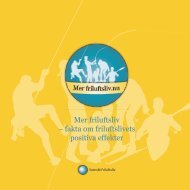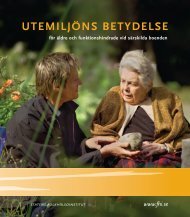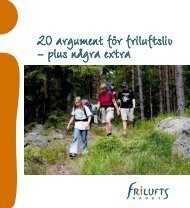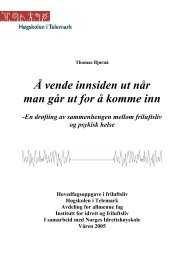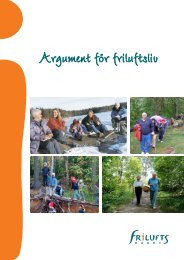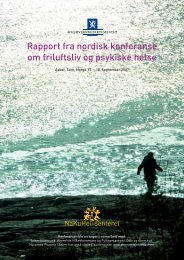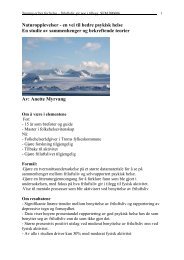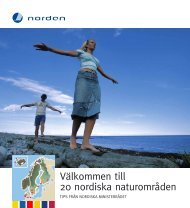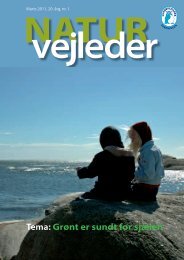Green Care: A Conceptual Framework - Frisk i naturen
Green Care: A Conceptual Framework - Frisk i naturen
Green Care: A Conceptual Framework - Frisk i naturen
You also want an ePaper? Increase the reach of your titles
YUMPU automatically turns print PDFs into web optimized ePapers that Google loves.
physiological effect – an effect on the body not just in the mind – of every<br />
thing people look at. But plants – like animals or humans – have an effect<br />
differing from any non-living object. Physical resonance, the effect of<br />
the observation of what plants do to rest and move, activates a human<br />
neurobiological program which could help to perform a similar activity.<br />
The concept of physical resonance may explain how the sensory effects<br />
on the body tissue provide impulses to the muscle tone and to the organs.<br />
Thus, plants can evoke a relaxing, soothing and restoring effect, spreading<br />
throughout the body including the sympathetic nervous system.<br />
There are manifold opportunities for experiencing these bodily sensations.<br />
Natural habitats, landscape and farms provide a whole range of different<br />
plants as well as trees. For the gardener, client, patient or restoration-seeker<br />
there is ample opportunity to use different natural forms to experience<br />
physical resonance in different parts of their body.<br />
It is not clear whether all people experience such sensations or whether<br />
they need to have special sensitivity. For example, can it be developed by<br />
training? It may be that introverted people or people with a certain capacity<br />
of introspection are more easily accessible to the idea of using their body<br />
feelings as a resonance instrument for exploring plant qualities for their<br />
human well being. Further research on this is needed.<br />
References<br />
Hartig, T., Mang, M. and Evans, G. W. (1991) ‘Restorative effects of natural environment experiences’.<br />
Environment and Behavior, 23, 3–26.<br />
Heimann, P. (1950) ‘On counter-transference’. International Journal of Psycho-Analysis, 31, 81-84.<br />
Kaplan, S. (1995) ‘The restorative benefits of nature: toward an integrative framework’. Journal of<br />
Environmental Psychology, 15, 169-182.<br />
Kaplan, R. and Kaplan, S. (1989) The Experience of Nature: A Psychological Perspective. New York:<br />
Cambridge University Press.<br />
Rand, M. (2001) ‘Somatic resonance and countertransference’. AHP Perspective, April/May.<br />
Totton, N. (ed.) (2005) New Dimensions in Body Psychotherapy. Mcgraw-Hill Publishing Company.<br />
Ulrich, R. S. (1984) ‘View through a window may influence recovery from surgery’. Science, 224,<br />
420-421.<br />
Ulrich, R. S., Simons, R. F., Losito, B. D., Fiorito, E., Milse, M. A. & Zelson, M. (1991) ‘Stress<br />
recovery during exposure to natural and urban environments’. Journal of Environmental Psychology,<br />
11, 201-230.<br />
94 <strong>Green</strong> <strong>Care</strong>: A <strong>Conceptual</strong> <strong>Framework</strong>



